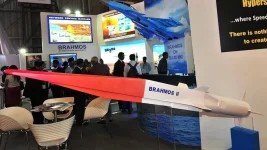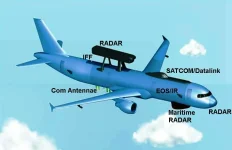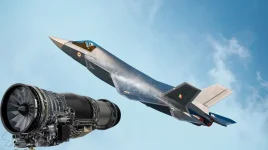- Views: 6K
- Replies: 13
India's indigenous aerospace and defence sector is poised for a landmark year in 2026, with plans to roll out two of its most advanced aerial platforms: the Ghatak stealth combat drone and the Tejas Mk2 fighter jet.
According to the Aeronautical Development Establishment (ADE), the parallel timelines for these projects signal a major transformation for the Indian Air Force (IAF), paving the way for a new combat doctrine that integrates manned and unmanned aircraft.
This strategic shift will equip the IAF with a formidable combination of a 4.5-generation fighter and a stealthy unmanned attacker, enhancing its capabilities in precision strikes, autonomous surveillance, and complex, high-stakes air combat scenarios.
The Ghatak: India's Autonomous Stealth Attacker
At the forefront of this technological leap is the Ghatak, an advanced Remotely Piloted Strike Aircraft (RPSA).Developed as India's premier Unmanned Combat Aerial Vehicle (UCAV), the Ghatak is a 13-ton aircraft featuring a "flying-wing" design. This specific shape, combined with special materials, gives it a very low radar cross-section, making it difficult for enemy air defence systems to detect.
The drone is designed for critical missions such as deep-penetration strikes into hostile territory and the suppression of enemy air defences (SEAD).
It is powered by a non-afterburning version of the Dry Kaveri engine, developed domestically by the Gas Turbine Research Establishment (GTRE).
With an internal fuel capacity of 3.7 tons, the Ghatak is expected to have a combat radius of over 1,000 kilometres and can remain airborne for 5 to 8 hours.
Its internal weapons bay can carry 1.5 tons of precision-guided bombs and missiles, potentially including the BrahMos-NG, allowing it to engage a wide variety of targets.
Recent project updates confirm that development is progressing steadily. Following successful design reviews, private-sector giant Larsen & Toubro (L&T) has begun fabricating the prototype's airframe.
The Dry Kaveri engine has also passed crucial high-altitude tests in Russia, with flight trials scheduled for late 2025. The IAF has expressed its intent to acquire at least 150 Ghatak UCAVs as a key part of its future combat strategy.
The Tejas Mk2: A New Generation of Indian Fighter
Complementing the Ghatak is the Tejas Mk2, a 4.5-generation multirole fighter jet set for its first flight in early 2026.Developed by the Aeronautical Development Agency (ADA) and Hindustan Aeronautics Limited (HAL), the Tejas Mk2 is a significant upgrade over the existing Tejas Mk1A. It is designed to replace the IAF's aging fleet of Mirage 2000, MiG-29, and SEPECAT Jaguar aircraft.
The Tejas Mk2 is larger, more agile due to its close-coupled canards, and powered by a more powerful General Electric F414 engine. Its design incorporates stealth features like radar-absorbent materials and twisted air intake ducts, which reduce its frontal radar visibility to just a quarter of the Mk1A's.
A key feature is its advanced avionics suite, led by the indigenous Uttam Active Electronically Scanned Array (AESA) radar. This powerful Gallium Nitride (GaN)-based radar can track multiple targets at ranges exceeding 150 km and is scheduled to enter production in 2025.
With 11 weapon stations and the ability to carry eight beyond-visual-range missiles, the Tejas Mk2 has double the mission endurance of its predecessor.
HAL aims for a high degree of self-reliance, with 82-90% indigenous content in Tejas Mk2
Revolutionising Air Combat for the IAF
The simultaneous introduction of the Ghatak and Tejas Mk2 is set to revolutionise the IAF's operational philosophy.The core of this new strategy is Manned-Unmanned Teaming (MUM-T), where a Ghatak drone will function as a "loyal wingman" controlled by a pilot in a Tejas Mk2 or other advanced fighter.
This allows the unmanned Ghatak to be sent ahead into heavily defended areas to scout, engage targets, or draw enemy fire, significantly enhancing the effectiveness and survivability of the manned aircraft.
This combination will provide the IAF with a layered strike capability, using the stealthy Ghatak for high-risk initial strikes and the versatile Tejas Mk2 for a broad range of multirole missions.
As 2026 approaches, the successful rollout of these two platforms will not only bolster India's military deterrence but also cement its position among a select group of nations capable of developing and deploying advanced, homegrown air power solutions for the modern battlefield.




